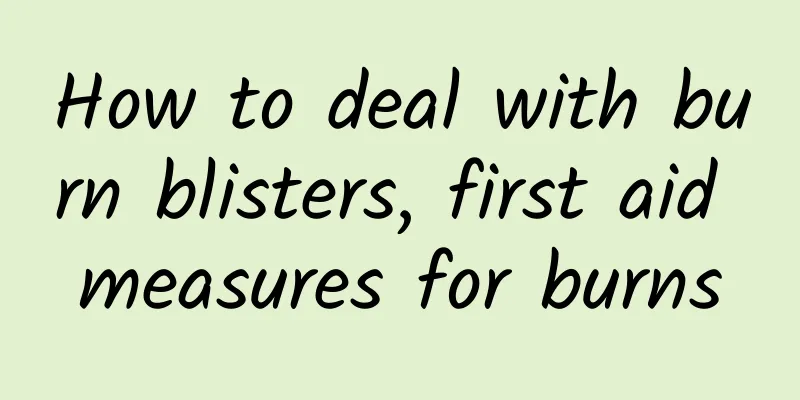What to do if a tooth rots and it hurts

|
I believe you must have heard this proverb related to teeth: toothache is not a disease, but once it hurts, it can take away half of a person's life. Many factors can cause toothache, such as unhealthy diet, eating hot, cold, sour or sweet food at random, or not paying attention to oral hygiene and not cleaning the mouth for a long time. Another type is when a hole appears in the tooth, which is a problem at the root. In this case, the toothache will be severe. So how do you treat a painful tooth rot? This situation is generally more common in tooth decay, and can also be caused by poor diet and poor oral hygiene. Restorative treatment can be used. It really depends on the condition of your teeth. For shallow caries, just remove the decay and fill it. For deep caries and nerve leakage, root canal treatment and a porcelain crown can be used to cover the area. If the entire crown of the tooth is decayed, but the root of the tooth can be retained, you can just drive a pile to make a crown. The tooth root has rotted, so the only option is to extract it before considering whether to have a denture or implant. Dental caries, commonly known as tooth decay, is a progressive lesion of the hard tissue of the teeth caused by the combined effects of multiple factors in the oral cavity. It is a process of demineralization of inorganic matter and decomposition of organic matter, which evolves from color change to the formation of substantial lesions as the disease progresses. It is a disease characterized by erosion, softening and discoloration of tooth enamel, which gradually develops into defects in tooth hard tissue and the formation of cavities. The incidence rate is higher among adolescents and is generally higher in cities than in rural areas. Among primary and secondary school students in China, the prevalence of dental caries is 60-70%. The characteristics of dental caries are high incidence and wide distribution. It is a common oral disease and one of the most common diseases in humans. The World Health Organization has listed it as one of the three major preventable diseases in humans, along with tumors and cardiovascular diseases. Dental caries is most likely to occur in the pits and fissures of the biting surfaces of molars and bicuspids, as well as on the contact surfaces of adjacent teeth. The former is called pit and fissure caries, and the latter is called interproximal caries. Children rarely develop caries at the cervical part of their teeth, and this condition is only seen when they are severely malnourished or have certain systemic diseases that make them extremely weak. Classification by degree of caries: 1. Shallow caries Caries damage only occurs within the enamel, and the initial manifestations are brown or dark brown spots or patches on the enamel and a rough surface. Then the surface damage occurs. Interproximal caries begins below the contact surface, while pit and fissure caries mostly begins in the groove, and are not easy to see in the early stages. It can only be seen when it occurs at the pits and fissures, but children's teeth are prone to food pigmentation at the pits and fissures, and the doctor may misdiagnose or miss the diagnosis if he does not examine carefully. Shallow caries has no symptoms. 2. Medium caries Caries has reached the dentin, forming shallow dentin cavities. The child will feel toothache when exposed to cold water, air conditioning, or sweet or sour food, but the symptom will disappear immediately after the stimulation is removed. This is because the dentin is sensitive to stimulation. Timely treatment of caries has good results. 3. Deep caries Caries has reached deep into the dentin, close to the pulp, or has affected the pulp. The children feel pain when exposed to cold, heat, sourness and sweetness, and are particularly sensitive to heat. Even after the drug is completely removed, the pain will continue for a certain period of time before gradually disappearing. At this time, most people need endodontic treatment to save the tooth. If deep caries is not treated, the pulp will become infected or necrotic. Bacteria can reach the outside of the apical foramen through the tooth root and cause periapical inflammation. Focal infection may develop. If the crown of the tooth has been largely destroyed or only the residual root is left, it should be extracted. 4. Root caries When the gums recede and the root surface is exposed, caries that occur on the root surface are called root caries, also known as root surface caries. 5. Violent caries In a short period of time (6-12 months), all teeth or multiple teeth or multiple tooth surfaces are affected by caries at the same time; the lesions show the characteristics of acute caries; most of them occur in susceptible people with special pathogenic factors or systemic background. Given that this type of disease process is extremely rapid, it is clinically called aggressive caries or rampant caries. The main method of treating caries is filling. The carious tissue is removed completely, a certain cavity shape is made, and after cleaning and disinfection, it is filled with filling material to restore the shape of the tooth defect so that the aging process will not continue to develop. Filling is most effective for shallow caries. For the treatment of moderate and deep caries, after removing all the carious tissue, sometimes the bottom of the cavity is close to the pulp, so it is necessary to add a layer of pulp protector at the bottom of the cavity before filling. |
<<: There is a hole in the tooth and it smells bad.
>>: What should I do if there is a hole after the wisdom tooth is extracted?
Recommend
Can I take cold medicine after eating crabs?
As we all know, crab is a relatively cold food, s...
Do you know the seven "unconventional" examination methods for ankylosing spondylitis?
Ankylosing spondylitis (AS) is a relatively diffi...
The benefits of white butterfly flower
White butterfly flower is very common in Yunnan, ...
Bright red non-menstrual bleeding
If it is not menstrual bleeding, you first need t...
What causes bleeding after taking long-acting contraceptive pills?
Women often encounter some annoying things in life...
Symptoms and treatment of periostitis
Among orthopedic diseases, periostitis is very co...
What to do if your hair pores are clogged
The harm caused by blockage of hair and pores is ...
Symptoms of gout in the feet, two commonly used prescriptions in traditional Chinese medicine
Gout in the feet is very common in our lives. Gen...
Can small breasts caused by genetic factors be cured?
Breast size is a very sensitive topic for women, ...
Sarcoma around the anus is related to four diseases
The growth of sarcoma around the anus often cause...
Pimples on face
When it comes to facial care, it is not only impo...
How to regulate the spleen and stomach to gain weight, pay attention to daily conditioning
Weight is one of the important indicators that re...
Chinese medicine has good curative effect in treating renal insufficiency!
Renal insufficiency will bring many adverse effec...
Why does my heart suddenly beat violently when I sleep?
If your heart suddenly starts beating violently w...
Infusion rate for children
If you are sick and want to recover quickly, you ...









